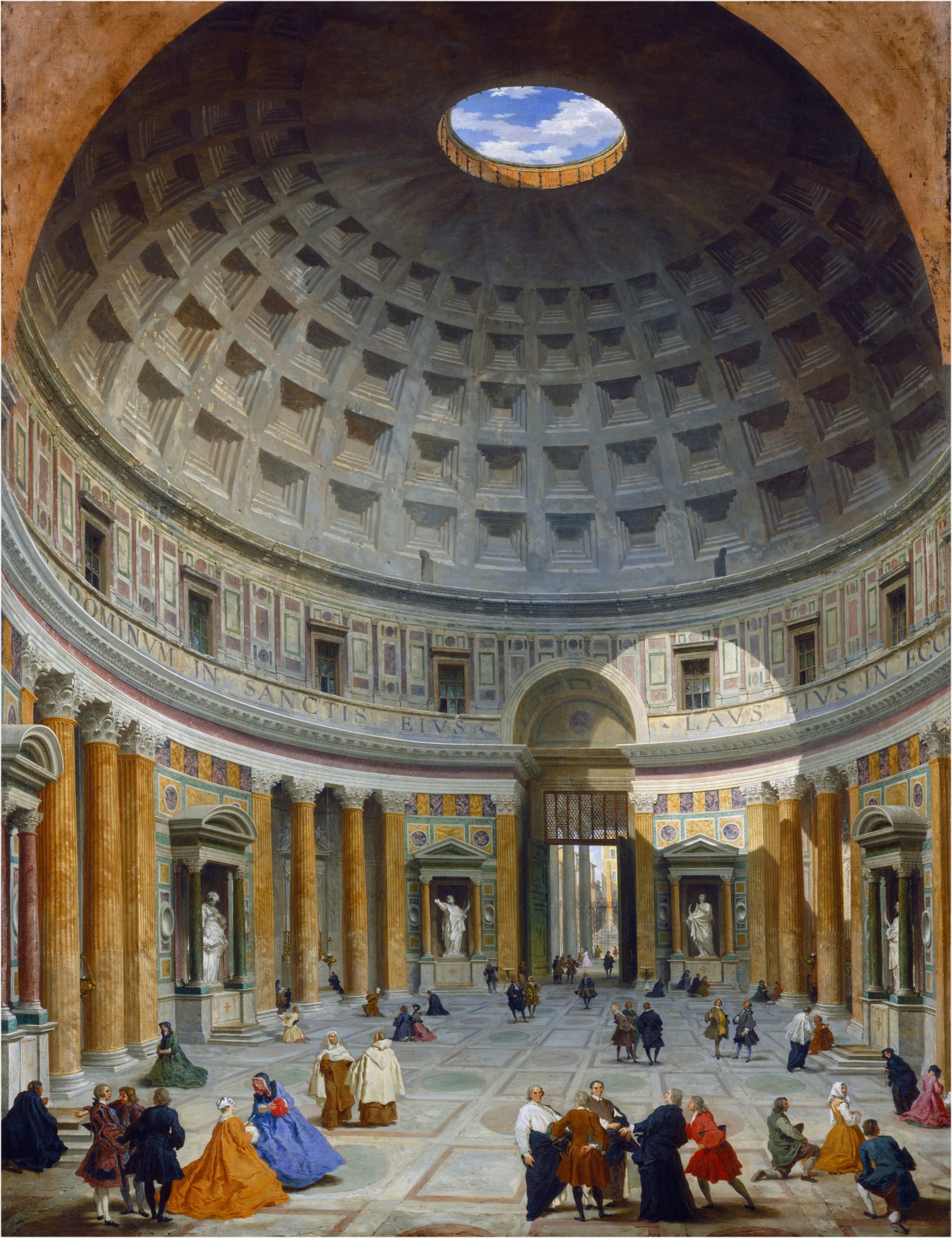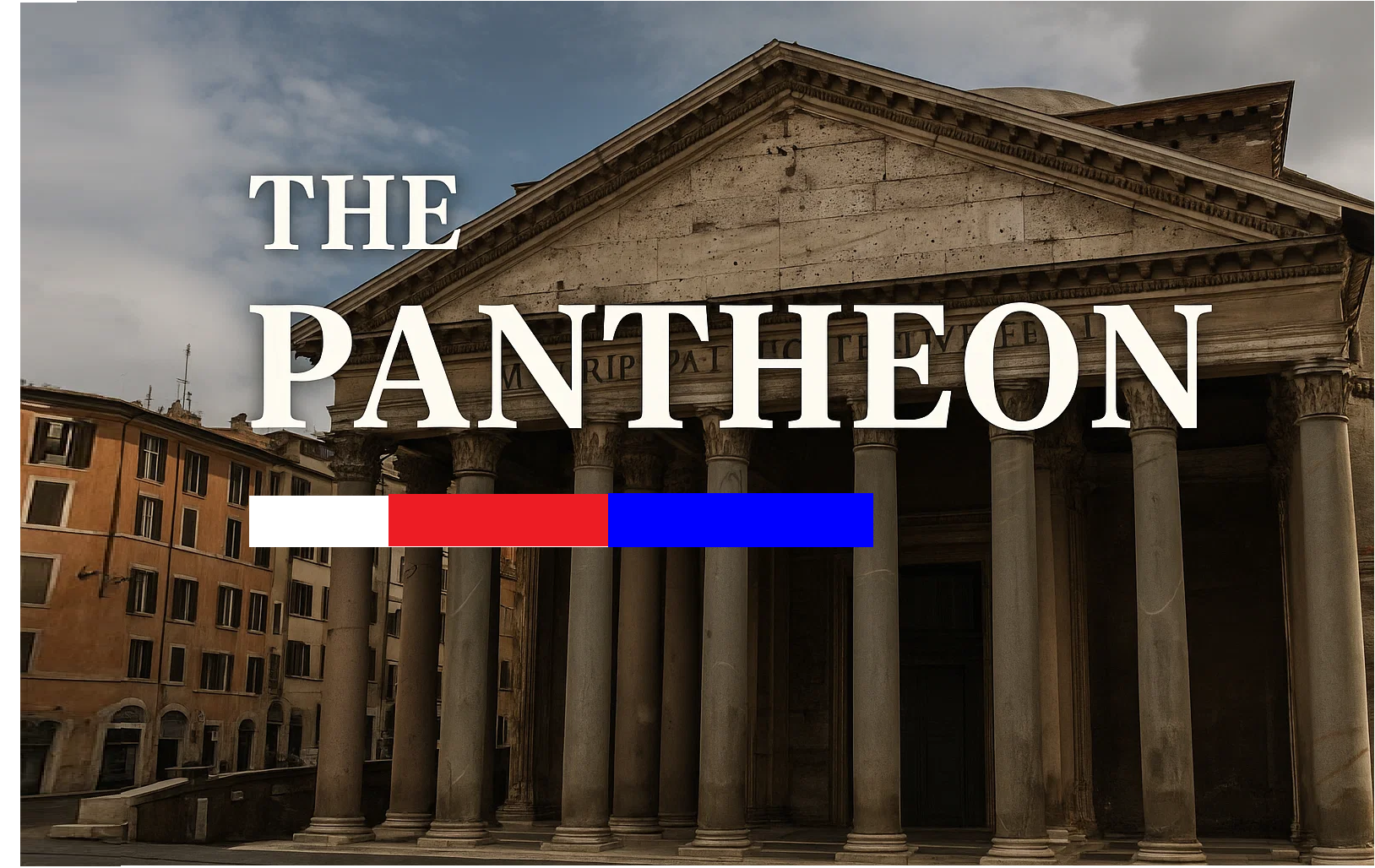The Pantheon does not merely stand in Rome; it speaks to Rome. It is not a static relic but a living palimpsest, its stones inscribed with the ambitions of emperors, the fervor of popes, and the daily life of a city across two millennia. Its history is a stone sermon on power, faith, and the perpetual repurposing of ideology.
Part I: The Divine Mandate of Empire (27 BC - 125 AD)
The story begins not with the building we see today, but with its predecessor. The first Pantheon was commissioned by Marcus Agrippa, the right-hand man and son-in-law of Rome's first emperor, Augustus. Its inscription—M·AGRIPPA·L·F·COS·TERTIVM·FECIT ("Marcus Agrippa, son of Lucius, three times consul, built this")—endures to this day, a deliberate piece of imperial propaganda by a later emperor.
This original temple, built around 27 BC, was part of a massive building program on the Campus Martius. Its purpose was socio-political: to legitimize the new, fragile regime of Augustus. By building a temple dedicated to "all the gods" (Pan-Theon), and specifically linking it to the divine lineage of Julius Caesar, Augustus and Agrippa were weaving the new imperial family into the very fabric of Roman state religion. It was an architectural declaration: the reign of the emperors was blessed by the entire pagan pantheon.
Part II: The Cosmic Order of Hadrian (c. 125 AD)
The first Pantheon burned down. The structure we know was entirely rebuilt by the Emperor Hadrian around 125 AD. Hadrian, a sophisticated Hellenophile and absolute monarch, had a different vision. He famously omitted his own name from the new building, leaving Agrippa's inscription as a gesture of respect to the original founder. But this was not humility; it was a statement of supreme confidence. Hadrian's power was so absolute he didn't need to put his name on his greatest work.
The new design was a revolutionary socio-political manifesto in brick and concrete.
The Portico
The traditional, towering granite columns and triangular pediment connected the building to the classical architecture of Roman power and piety. It was familiar and authoritative.
The Rotunda and Oculus
This was the radical leap. By moving away from the linear axis of a traditional temple to a vast, spherical space crowned by a single oculus (eye), Hadrian created a microcosm of the Roman world. The emperor, like the oculus, was the singular source of light and order, looking down upon a perfectly harmonious, domed universe. The coffered ceiling, possibly once gilded, symbolized the celestial vault. The building was no longer just a house for the gods; it was a symbolic representation of the cosmos itself, over which the Roman Emperor presided. It was the ultimate architectural expression of imperial power as a natural, cosmic force.

Part III: The Edifice of Power Changes Hands (609 AD)
The fall of the Western Roman Empire saw the Pantheon fall into disrepair. Its political meaning faded with the statues of its gods. Then, in 609 AD, the building witnessed one of the most significant symbolic transfers of power in Western history. The Byzantine Emperor Phocas granted the building to Pope Boniface IV, who consecrated it as the Church of St. Mary and the Martyrs (Santa Maria ad Martyres).
This act was profoundly socio-political. The ancient temple to "all the gods" became a tomb for the bones of Christian martyrs, physically and spiritually overwriting the pagan past. The oikumene (the inhabited, civilized world) that Hadrian's Rome had dominated was now the ecumene of the Christian Church. The Pantheon's survival is largely due to this consecration; while other pagan temples were quarried for stone, it was protected as a holy Christian site. The center of cosmic power had shifted from the Emperor to the Pope.
Part IV: A Pillar of Papal Rome (Renaissance - Present)
Throughout the Middle Ages and the Renaissance, the Pantheon continued to be a stage for political theater. It was used as a fortress and saw popes like Urban VIII Barberini strip the bronze from its portico ceiling to cast cannons for Castel Sant'Angelo, leading to the famous pasquinade: "What the barbarians did not do, the Barberinis did."
It became the burial place for kings (Umberto I, Victor Emmanuel II) and artists (Raphael), symbolizing a new fusion of national, artistic, and religious identity. The Italian monarchy and the great masters of the Renaissance were thus laid to rest under the same dome that had once sanctified Roman emperors, creating a new lineage of power and prestige for the Catholic Church and the Italian state.

TODAY: The Enduring Dialogue
Today, the Pantheon is a functional Catholic church and Italy's most visited site. It is free to enter, a public space in a way it never was in antiquity. Its socio-political power now lies in its universality. Tourists, pilgrims, and artists alike stand under the oculus, watching the rain fall or a shaft of sunlight trace the floor. The building no longer preaches the divine right of emperors or the exclusive truth of a single faith. Instead, it speaks a more timeless language: of human genius, of the awe of the cosmos, and of the endless, layered history of a city that has been a center of world power for over two thousand years. The Pantheon's final, and perhaps greatest, political statement is that it belongs to everyone.
The American Revolution: A World-Historical Earthquake
To fast-forward to the American Revolution is to witness the moment a new political force erupted onto the global stage, an event whose significance was immediate, radical, and enduring.
1. The Creation of the First Modern Republic
Before 1776, the world was dominated by monarchies, empires, and aristocracies. The idea that a nation could be governed not by a king by divine right, but by its citizens through elected representatives, was considered radical and unstable. The American Revolution made this idea a reality. The establishment of the United States of America created the first major modern republic since ancient Rome. It proved that a large nation-state could be founded on the Enlightenment principle of popular sovereignty—the radical notion that the government's power derives from the consent of the governed.
2. The Power of Enlightenment Ideas
The Revolution was the first large-scale practical application of the Enlightenment. The philosophies of John Locke (natural rights, social contract), Montesquieu (separation of powers), and others were not just abstract theories discussed in Parisian salons; they were the very foundation of new governments.
- The Declaration of Independence was a revolutionary manifesto, asserting that all men are created equal with unalienable Rights, and that when a government becomes destructive of these ends, "it is the Right of the People to alter or to abolish it." This was a direct challenge to every hereditary monarchy in Europe.
- The U.S. Constitution (1787) became a stunningly influential blueprint, creating a system of checks and balances designed to prevent tyranny and protect liberty.
3. A Catalyst for Global Revolutions
The success of the American Revolution sent shockwaves across the Atlantic. It demonstrated that a determined group of colonists could defeat a European superpower. It also left France bankrupt from supporting the American cause, directly leading to the social and fiscal crises that ignited the French Revolution in 1789. The American experiment became a model and an inspiration for subsequent revolutions in Haiti (1791), Latin America (the 1810s-1820s), and beyond.
4. The "American Experiment" and Ongoing Challenges
The Revolution was, in essence, the beginning of a grand "experiment." It launched a continuous and often turbulent national conversation about the meaning of its own ideals.
- The Hypocrisy of Slavery: The proclamation that "all men are created equal" was written in a nation where hundreds of thousands of people were enslaved. This fundamental contradiction set the stage for the American Civil War and the long, ongoing struggle for civil rights.
- A Model for Democracy: Despite its flaws, the American system became a powerful, enduring model for constitutional democracy, federalism, and individual rights, influencing the formation of countless nations in the centuries that followed.
In short, the significance of the American Revolution lies in its transformation of political thought into political reality. It shattered the old order of monarchy and empire, introduced the world to a new form of republican government, and ignited an age of revolution that would reshape the globe. It was not the end of a struggle, but the dramatic, world-altering beginning of the modern democratic experiment.



